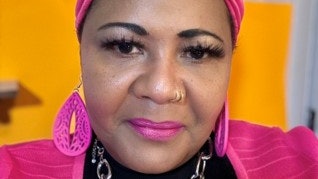Kazaam is a 5-year-old kindergarten Black male. He is a happy, energetic child. However, his teacher often has to tell him to sit down and stay on task to do his work. He is what Boykin calls ‘vervistic’. Rather than trying to understand his learning style, the teacher assumes he is acting out and defying her directions. She writes a referral, and Kazaam ends up in the office with the principal and being reprimanded for his behavior. He is required to serve one day of out-of-school suspension to ‘learn his lesson’.
Research on Racism, Anti-Blackness, Deficit Thinking, Adultification
 Dr. Donna Y. Ford
Dr. Donna Y. Ford
The OCR’s CRDC gathers and publishes key information about student access to educational opportunities and school climate from public schools (pre-K through 12th grade) in all 50 states, Washington, D.C., and the Commonwealth of Puerto Rico. In this 2022 snapshot of the 2017-18 school year, OCR found stark differences in suspensions between Black boys and all other student groups. Table 1 presents findings from the CRDC. Boys of all races were disproportionately disciplined, but Black boys were suspended and expelled at proportions that were three times their school enrollment. To this point, in each year of data Zimmermann (2024) analyzed, Black elementary students were more likely to be suspended than white secondary students. For more information, we refer readers to Figure 2 in the report, titled “Trends in Out-of-School Suspension Rates, by Race and Ethnicity and School Level, 1973, 2011–12 to 2017–18.”
 Office for Civil Rights CRDC Overview of Student Discipline K-12
Office for Civil Rights CRDC Overview of Student Discipline K-12




















